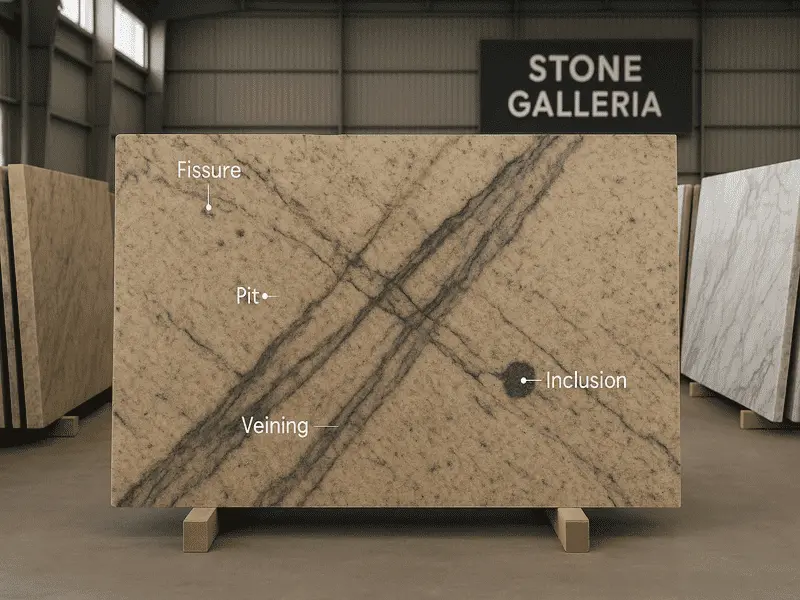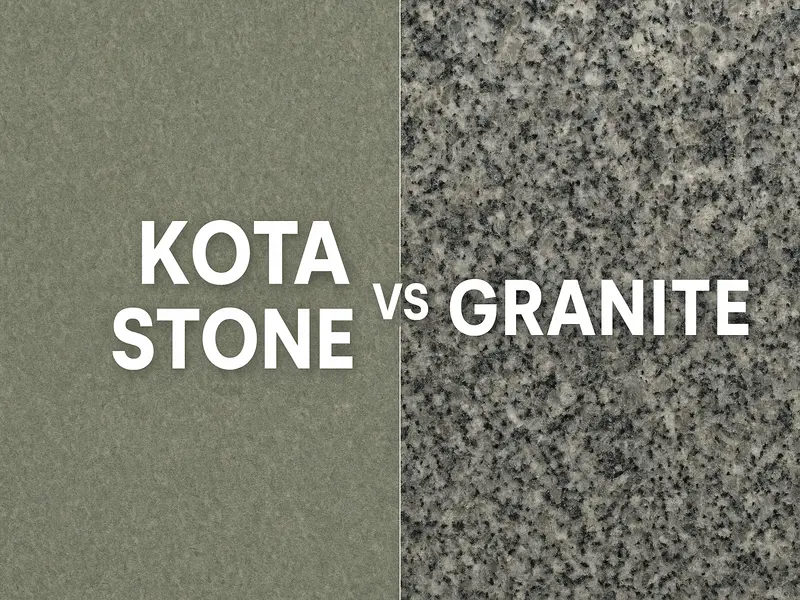In a sudden move that has sent shockwaves through global trade, the U.S. imposed a 50% import duty on Indian granite, marble, quartzite, and other natural stones in Q2 2025. The tariff disrupts decades of established business practices — from buyer-supplier relationships to long-term investments — compelling Indian exporters to explore alternative markets while U.S. importers recalibrate sourcing and pricing strategies.
Introduced amid rising geopolitical tensions and trade imbalances, this measure represents one of the most significant challenges for India’s natural stone industry in recent years. Understanding its impact from multiple perspectives — manufacturers, exporters, buyers, architects, interior designers, homeowners, and policymakers — is critical for navigating uncertainty and identifying potential opportunities in a rapidly shifting market.
This article highlights the key implications of the 50% tariff, examines possible future scenarios, and offers actionable strategies for exporters to stay competitive globally, while providing practical guidance readers can use to navigate these challenges effectively.
ALSO READ | Why India is the World Leader in Granite Exports: Key Numbers & Market Trends
Trade Tensions, Policy Shifts, and the Road to a 50% Tariff
For over two decades, India has been a dominant player in the global natural stone trade — particularly in granite, marble, and quartzite. From the black granites of Andhra Pradesh to the golden and pink varieties from Rajasthan, Indian quarries have supplied slabs to luxury projects, high-rise buildings, and kitchens across the United States and Europe.
Until early 2025, this trade enjoyed a relatively low tariff regime, with import duties ranging between 0% and 3.7%, depending on specific HTS codes. That changed dramatically with the U.S. administration’s “Liberation Day” tariff initiative.
The escalation was rapid:
| Timeline | Announcement Date | Import Tariff Rate on Indian Natural Stone |
| Before April 5, 2025 | NA | 0%–3.7% |
| April 5 – Aug 6, 2025 | April 2, 2025 | Baseline 10% |
| Aug 7 – Aug 26, 2025 | April 9, 2025 | 25% (Reciprocal Tariff) |
| Aug 27, 2025 onward | August 6, 2025 | 50% (Reciprocal + Additional 25%) |
What began as a moderate policy adjustment quickly escalated into one of the steepest import barriers in the history of the natural stone trade. For U.S. importers, it meant rethinking sourcing strategies overnight. For Indian exporters — particularly those heavily reliant on the American market — it meant immediate price shocks, disrupted shipments, and suspended purchase orders.
For Indian exporters, particularly those who had built long-term relationships in the U.S. market, this represented more than just a tariff hike. It was a fundamental challenge to their business model — one that relied on competitive pricing, scale, and trusted relationships rather than high-margin branding or domestic demand.
In short, a decades-old balance between two economies was abruptly shaken.
ALSO READ | Looking to Import Granite from India? Things You Need to Know
Why the U.S. Natural Stone Market Matters for Indian Granite, Marble, and Quartzite
The United States has long been the largest and most influential market for Indian natural stone exports, consistently accounting for about 25% of India’s total shipments.
| Years | Export Value in USD Million | US Share | Percentage |
| 2020-2021 | 348 | 92 | 26.44% |
| 2021-2022 | 1303 | 344 | 26.40% |
| 2022-2023 | 1279 | 336 | 26.27% |
| 2023-2024 | 1138 | 313 | 27.50% |
| 2024-2025 | 1161 | 316 | 27.22% |
| 2025-2026 (July) | 414 | 102 | 24.64% |
Source: Government of India, Ministry of Commerce and Industry, Department of Commerce
Operating on narrow profit margins, the Indian natural stone sector now faces significant financial stress, as only a few manufacturers can absorb the impact of the steep U.S. tariffs. Consequently, continued trade with the American market is becoming increasingly unsustainable. Immediate effects are already visible: shipments of granite, marble, and quartzite are delayed at ports, orders are being canceled on a wide scale, and inventory backlogs are putting severe strain on cash flows throughout the supply chain. These disruptions are closely linked to the trade policy changes outlined earlier, emphasizing the broader consequences of the tariff hike.
The new duty sharply increases the U.S. market price of Indian stone, eroding the pricing advantage that has long made India a preferred supplier. Competing countries such as Vietnam (20% tariff), Mexico (15%), and China (30%) now offer more competitive alternatives, threatening India’s previously strong market share. Industry leaders warn that smaller manufacturers may face liquidity crises or even be forced out of the U.S. market entirely.
2025 Monthly Comparison - HSN 6802 - USD Million Indian Exports to USA
| Month/Year | Current Year Value (USD Million) | Previous Year Value (USD Million) | YoY Growth (%) | Current Year Cumulative Value (USD Million) | Previous Year Cumulative Value (USD Million) | Cumulative YoY Growth (%) |
| Apr-25 | 23.490 | 25.63 | -8.35 | 23.490 | 25.63 | -8.35 |
| May-25 | 25.000 | 31.100 | -19.60 | 48.490 | 56.73 | -14.52 |
| Jun-25 | 25.51 | 24.320 | 4.91 | 74.000 | 81.04 | -8.69 |
| Jul-25 | 27.52 | 26.220 | 4.95 | 101.52 | 107.26 | -5.36 |
| Total | 101.520 | 107.260 | 5.36 |
This disruption underscores the critical need for a balanced and diversified export strategy. Relying heavily on a single market, even one as significant as the U.S., exposes exporters to sudden policy changes and global trade shocks. Expanding into multiple regions — including the Middle East, Europe, and Southeast Asia — not only mitigates risk but also ensures long-term stability and sustainable growth for the Indian natural stone industry.
Turning a Setback into Strategy: How Indian Exporters Can Adapt
The 50% U.S. import tariff, while severe, also serves as a strategic prompt for Indian granite, quartzite, and marble exporters
- Market Diversification: Shift supply toward high-growth regions such as the Middle East, Europe, and Southeast Asia.
- Value-Added Products: Focus on cut-to-size slabs, pre-fabricated countertops, and branded finished goods to move away from commodity pricing.
- Domestic Demand: Capitalize on rising luxury housing and commercial projects in India.
- Operational Efficiency: Use lower export volumes as an opportunity to upgrade production technology, optimize logistics, and improve supply chain resilience.
- Policy Collaboration: Work with Indian authorities and industry bodies to seek trade agreements, temporary exemptions, or tariff relief.
Even if the U.S. tariff is revised or lifted, exporters who actively pursue alternative markets will enjoy greater leverage, credibility, and a diversified client base, ensuring long-term global competitiveness.
ALSO READ | Top 10 Granite Manufacturers, Suppliers & Exporters in India – The Best Companies to Know
What’s Next: Possible Scenarios for the U.S. Tariff on Indian Stone
The 50% U.S. import duty on Indian natural stone, introduced in 2025, comes at a time of unprecedented trade uncertainty and geopolitical tension. With the upcoming U.S.-India trade discussions scheduled for November 2025, the future of this tariff remains unclear. While no one can predict exactly how the U.S. will act, potential outcomes could include:
1. Tariff Rollbacks or Reductions
The U.S. could reduce the 50% duty partially or fully if diplomatic progress is made and India addresses U.S. trade concerns.
2. Tariffs Remain Unchanged
The 50% duty could continue unchanged, keeping Indian stone exports at a competitive disadvantage in the U.S. market.
3. Conditional Adjustments or Partial Exemptions
Certain products or sectors (e.g., polished slabs, tiles, quartzite) could receive temporary or partial exemptions. Adjustments could depend on compliance with U.S. regulations or trade negotiations.
4. Tied Trade Concessions
Any changes to the stone tariff could be part of broader trade negotiations, possibly linked to other sectors like textiles, electronics, or chemicals.
5. Additional Compliance Requirements
Even if tariffs remain the same, the U.S. could impose new documentation, certification, or customs procedures, increasing operational complexity for exporters.
For Indian granite, marble, and quartzite exporters, the key takeaway is no one can predict the exact outcome. The tariff could be rolled back, maintained, partially adjusted, or temporarily modified, so exporters should focus on agility, market diversification, and monitoring developments closely.
Conclusion
The 50% U.S. import duty on Indian granite, marble, and quartzite has undeniably disrupted decades of established trade patterns, reshaping relationships, investments, and market expectations. Yet, for exporters who approach this challenge strategically, the tariff also presents a rare opportunity: to reassess, innovate, and diversify.
By redirecting focus to emerging high-growth markets — from the Middle East and Europe to Southeast Asia — Indian stone exporters can reduce dependency on a single market and strengthen their global footprint. Simultaneously, investing in value-added products such as cut-to-size slabs, pre-fabricated countertops, and branded finished goods can transform a commodity-based business into a higher-margin, differentiated enterprise.
Domestic demand in India, fueled by luxury housing and commercial projects, provides an additional buffer, allowing manufacturers to stabilize revenues while navigating international uncertainty. Moreover, lower export volumes create a window to upgrade production technology, optimize logistics, and build stronger supply chain resilience, ensuring long-term competitiveness.
Even as trade talks and geopolitical developments unfold, exporters who have diversified markets and enhanced capabilities will gain leverage, credibility, and flexibility. In an industry often defined by global volatility, adaptability is the ultimate currency — and those who embrace it today are likely to emerge stronger tomorrow.


 Fact Checked
Fact Checked








![Latest GST on Granite Slabs & Blocks [2025 Chart + HSN + Price Examples]](https://stonegalleria.in/admin/images/blog/latest-gst-on granite.webp)





